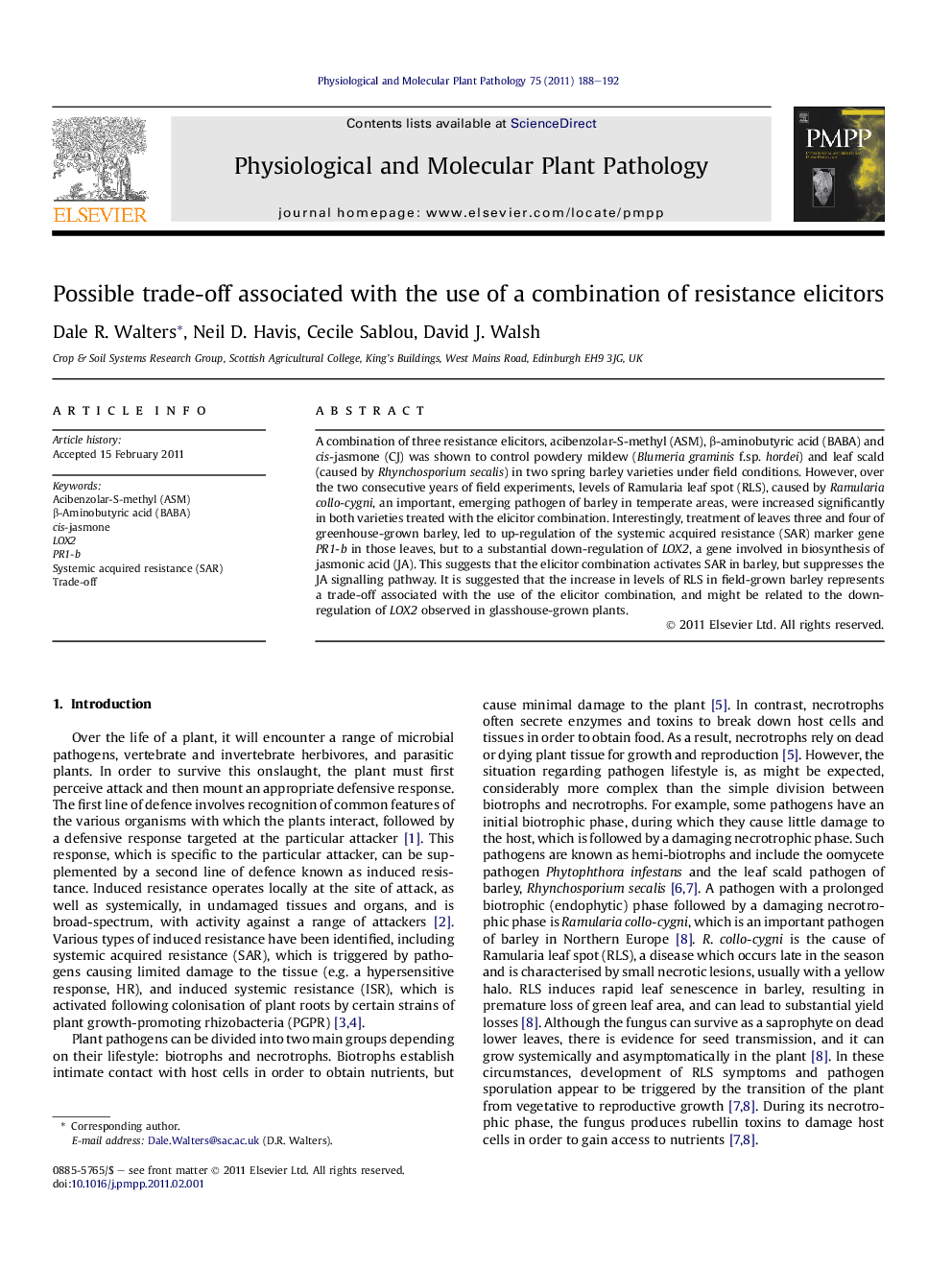| Article ID | Journal | Published Year | Pages | File Type |
|---|---|---|---|---|
| 2836586 | Physiological and Molecular Plant Pathology | 2011 | 5 Pages |
A combination of three resistance elicitors, acibenzolar-S-methyl (ASM), β-aminobutyric acid (BABA) and cis-jasmone (CJ) was shown to control powdery mildew (Blumeria graminis f.sp. hordei) and leaf scald (caused by Rhynchosporium secalis) in two spring barley varieties under field conditions. However, over the two consecutive years of field experiments, levels of Ramularia leaf spot (RLS), caused by Ramularia collo-cygni, an important, emerging pathogen of barley in temperate areas, were increased significantly in both varieties treated with the elicitor combination. Interestingly, treatment of leaves three and four of greenhouse-grown barley, led to up-regulation of the systemic acquired resistance (SAR) marker gene PR1-b in those leaves, but to a substantial down-regulation of LOX2, a gene involved in biosynthesis of jasmonic acid (JA). This suggests that the elicitor combination activates SAR in barley, but suppresses the JA signalling pathway. It is suggested that the increase in levels of RLS in field-grown barley represents a trade-off associated with the use of the elicitor combination, and might be related to the down-regulation of LOX2 observed in glasshouse-grown plants.
Graphical abstractFigure optionsDownload full-size imageDownload as PowerPoint slideHighlights► Elicitor Combination up-regulates PR1-b but down-regulates LOX2 in barley. ► The elicitor combination reduces infection by powdery mildew and Rhynchosporium secalis, but increases infection by Ramularia collo-cygni. ► The latter might be a trade-off associated with the use of the elicitor combination.
